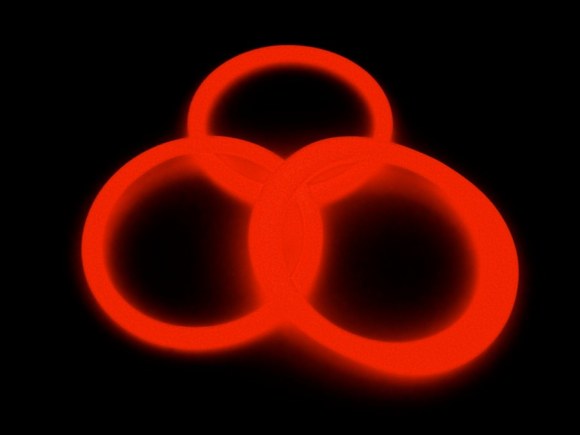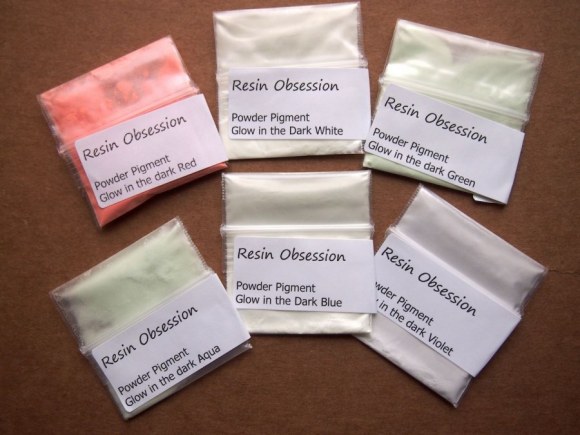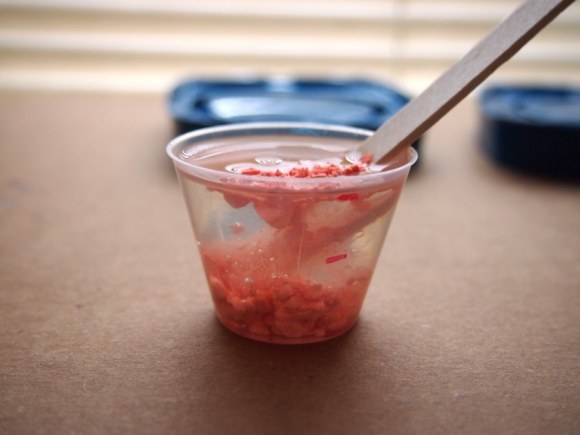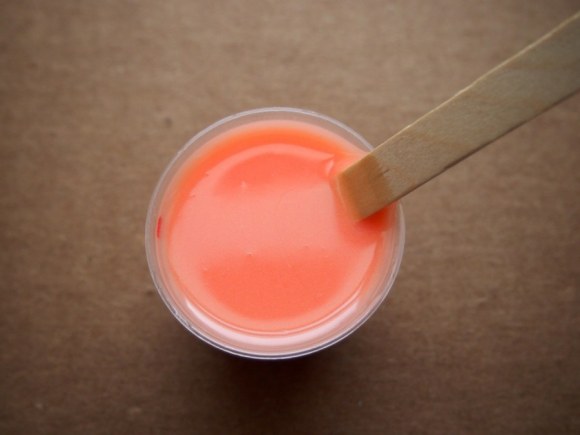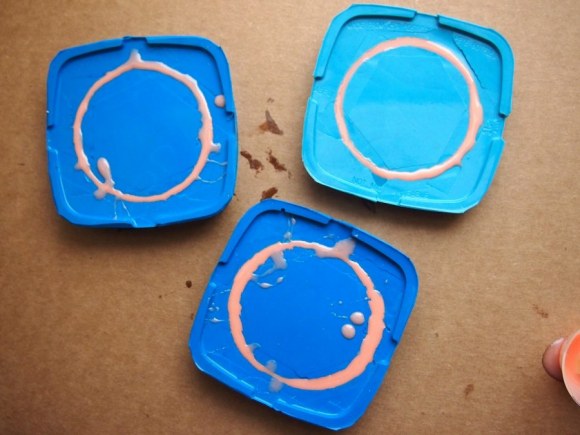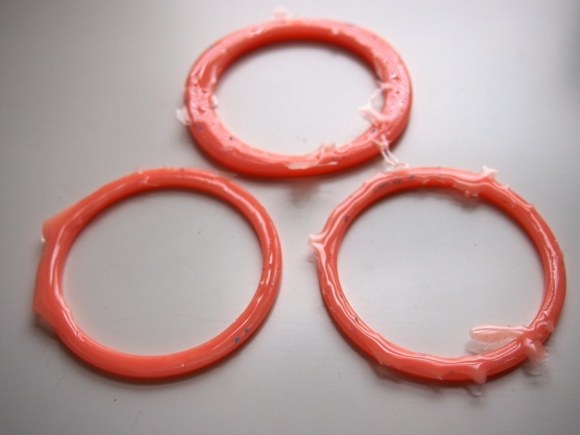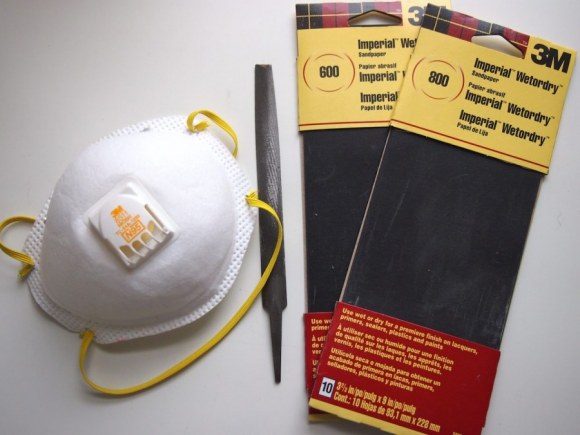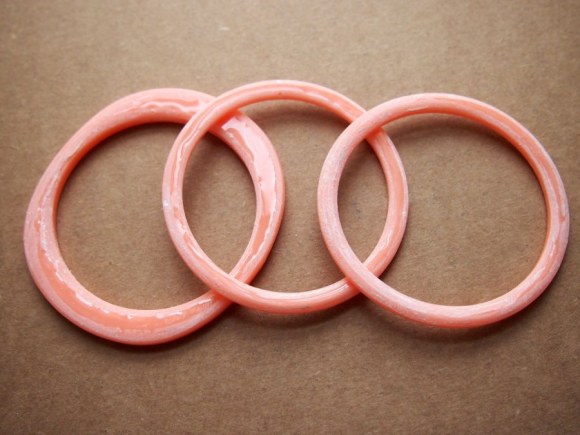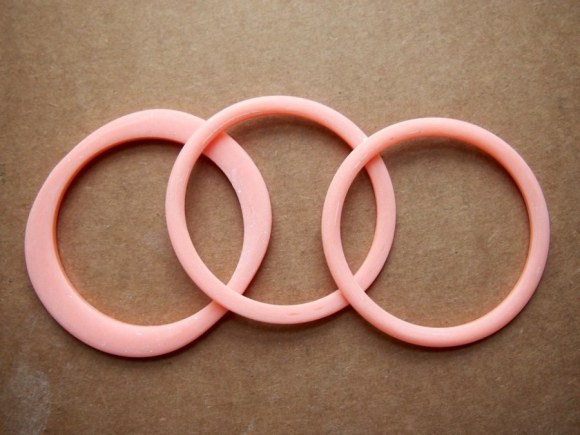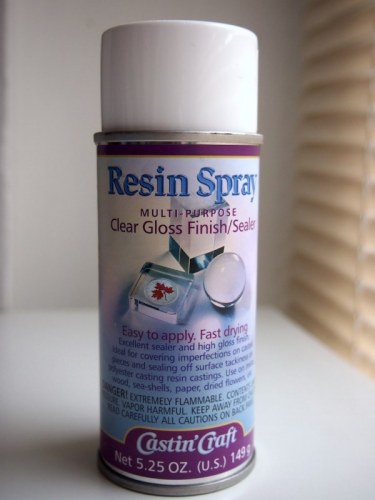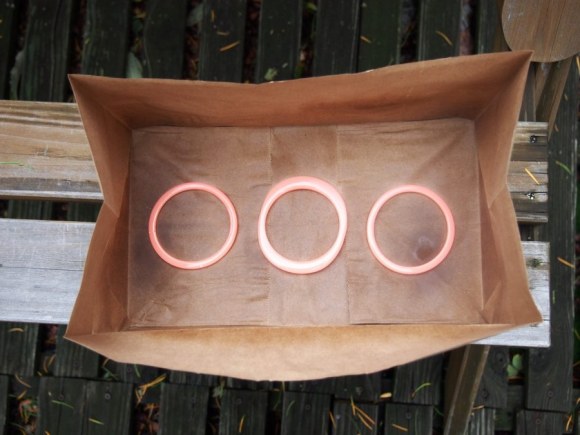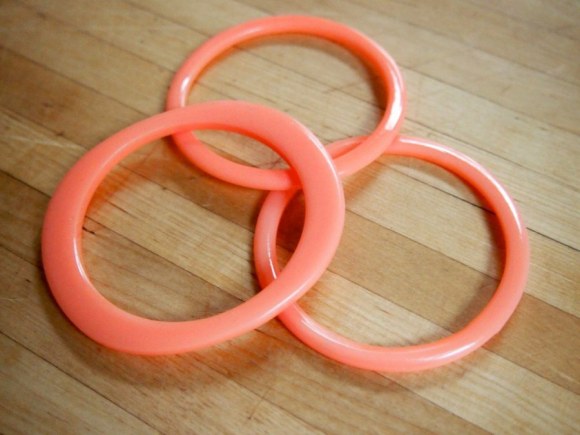glow in the dark skinny bangles
the last glow in the dark resin test was a bit stressful. using acrylic paint was a renegade move, and although it worked, it didn't seem reliable enough to try again. searching for a transparent brown pigment to use on the dresser handles, led to an amazing resource for resin supplies. i might as well direct deposit my paychecks to resin obsession. they have so many pigments for resin casting- including this variety pack of glow in the dark powders!!
how could i resist?! they arrived just in time to christen some skinny bangle silicone molds. having never worked with powdered pigments, and not getting much in the way of directions, i made a big mistake right off the bat:
after mixing up the resin, i dumped the powder directly into it. naturally, it clumped up and never did get completely mixed together. let this be a lesson- pour a small amount of resin into a separate cup and add the powder to that. once all the clumps have broken down and the mixture is totally combined, pour it back into the remaining resin. the only instructions that came with the pigment was to use 1/2oz powder to 1oz resin. i only used 1/4oz of powder to 1oz resin, and was pleased with the results.
the new molds had a crazy static charge, and when the resin hit them, it went haywire. terrific mess. when the bangles were cured, and removed from the molds, they had lots of excess resin to remove. that can only mean one thing...
they needed to be filed and sanded. UGH. the worst. have i mentioned already that this powder reeks of sulfur? well, it does. and when it gets filed and sanded, it stinks to high heaven. figuratively, and literally. the 600 and 800 grit paper worked great to buff out the bangles, but it took a 220 grit to work out the file marks before i could touch the finer papers.
a persistent problem with filing and sanding resin has been achieving a high shine once the pieces are finished. another purchase from resin obsession provided some hope:
clear gloss finish, sprayed lightly in many coats (OUTDOORS), worked a charm.
it's obvious that the "glow power" of this pigment far surpasses the acrylic trial, and the final color- in light- is absolutely delicious. like an electric peach smoothie. as soon as the stench of rotten eggs has subsided, we'll move on to testing the other glow in the dark colors- and come up with a better way to pour it into the molds.

